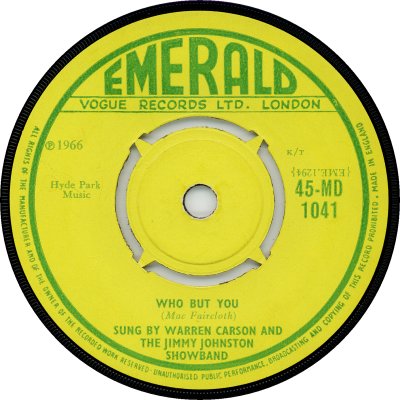
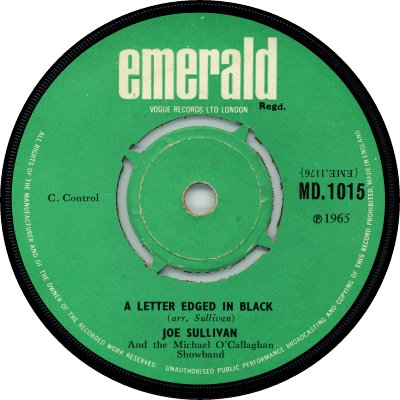

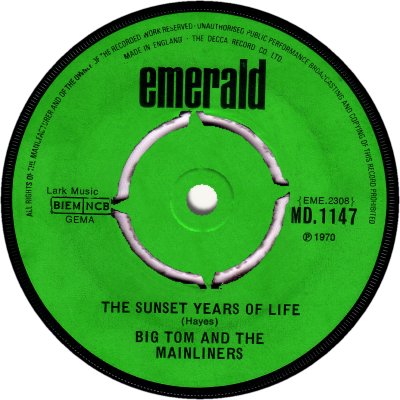
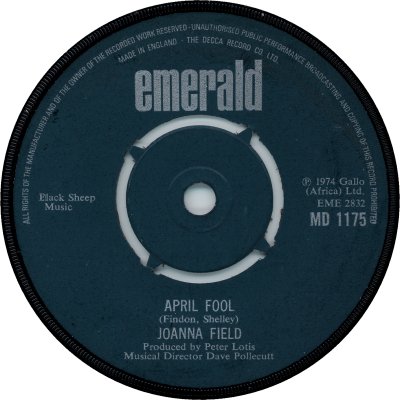
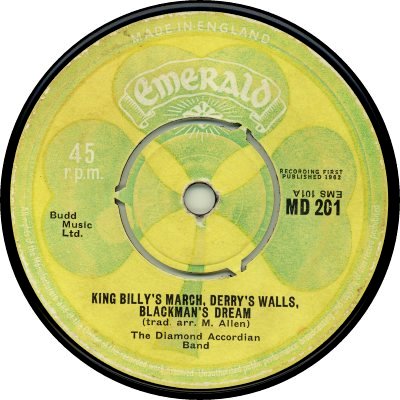
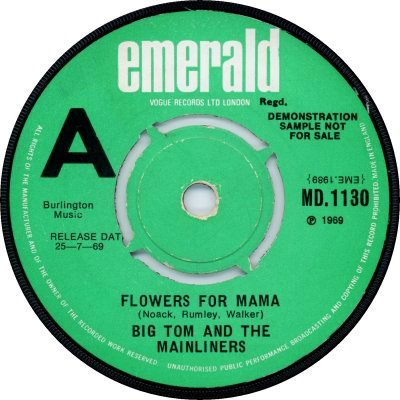
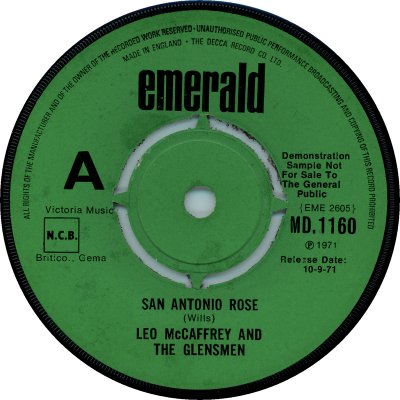
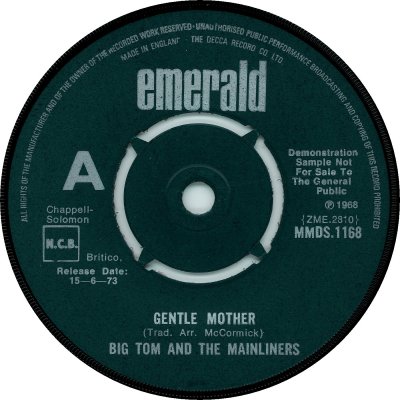
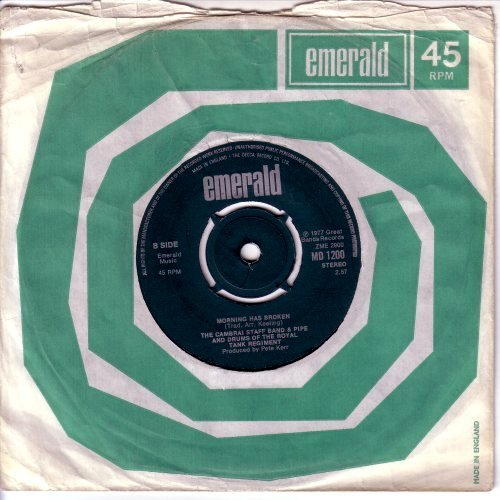
Emerald was formed in 1962 by promoter Mervyn Solomon, son of Maurice Solomon of the Belfast-based record distribution company Solomon & Peres. It concentrated on releasing Irish material at first, covering the Showband, Traditional and Country & Irish fields, but later expanded its areas of interest to include Scottish music and mainstream Pop - it even put out an LP and a couple of singles by Rock 'n' Roll band Shakin' Stevens and the Sunsets. Emerald operated out of Belfast but had a branch in Dublin; its records were handled in mainland Britain by Vogue Records of London, which by that time was owned by Decca. The company was to enjoy a long relationship with Decca; that relationship seems to have ended in 1979, not long before Decca was taken over by Polygram. Emerald served what was presumably a niche market well, putting out large numbers of albums and singles in the process; it even scored a Chart hit in 1967, when Frankie McBride's, 'Five Little Fingers' (MD-1081) tickled the Top 20. In the course of time Emerald developed several offshoots. Its Pop / Country label 'M and M' debuted in November 1970, and another Pop label, 'Mint', followed in 1975 (q.v. both); there was also a New Wave label, 'Rip Off' (q.v.), and an album-only label for silver, pipe and other massed bands, 'Great Bands'. When the agreement with Decca ended, Emerald switched to Spartan for distribution. In the 1980s its products seem to have appeared on the Emerald Gem label rather than on Emerald - the Emerald Gem series had run in tandem with the main Emerald label since 1968.
Emerald's singles went through four label designs down the years, though the last three were closely related. The first label was yellow with green printing, and it had a credit to Vogue Records Ltd (1); this lasted until some time in the second half of 1966, when it was replaced by a pale green label with a white, lower-case, logo (2). With minor changes, this pale geen label saw out the 1960s. A label in a richer green with a black logo was introduced in the second quarter of 1970, and the reference to Vogue Records Ltd was replaced by a reference to The Decca Record Co (4). Finally the logo turned silver and the colour blue-green (5). A short-lived dance music series from 1962 had labels with a shamrock design in green on yellow (6). Demonstration copies were intoduced during the 'pale green label' era, and were in the Decca 'house' style (7, 8, 9). The company sleeve also was in Decca's 'house' style (10); it too appears to have been introduced with the pale green labels, and it was used into the 'blue-green labels' era. Numbering of singles was mainly in an MD-1000 series; in the early '70s stereo singles had an 'S' after the MD. A three-track stereo 'maxi single', 1168, was given an 'MMDS' prefix, the extra 'M' presumably standing for 'Maxi'; oddly MDS-1167, which was also a three-track stereo maxi-single and which came out at much the same time, wasn't given the extra 'M'. The discography below only covers the years 1970-78, after which period Emerald appears to have stopped issuing singles. There was however at least one release on the Emerald Gem label: Ann Williamson's 'When You And I Were Young Maggie' (MD-1222), which came out in 1982. A fuller discography can be found here.
(http://www.irishmusicreview.com)
(http//www.emeraldmusiconline.com)
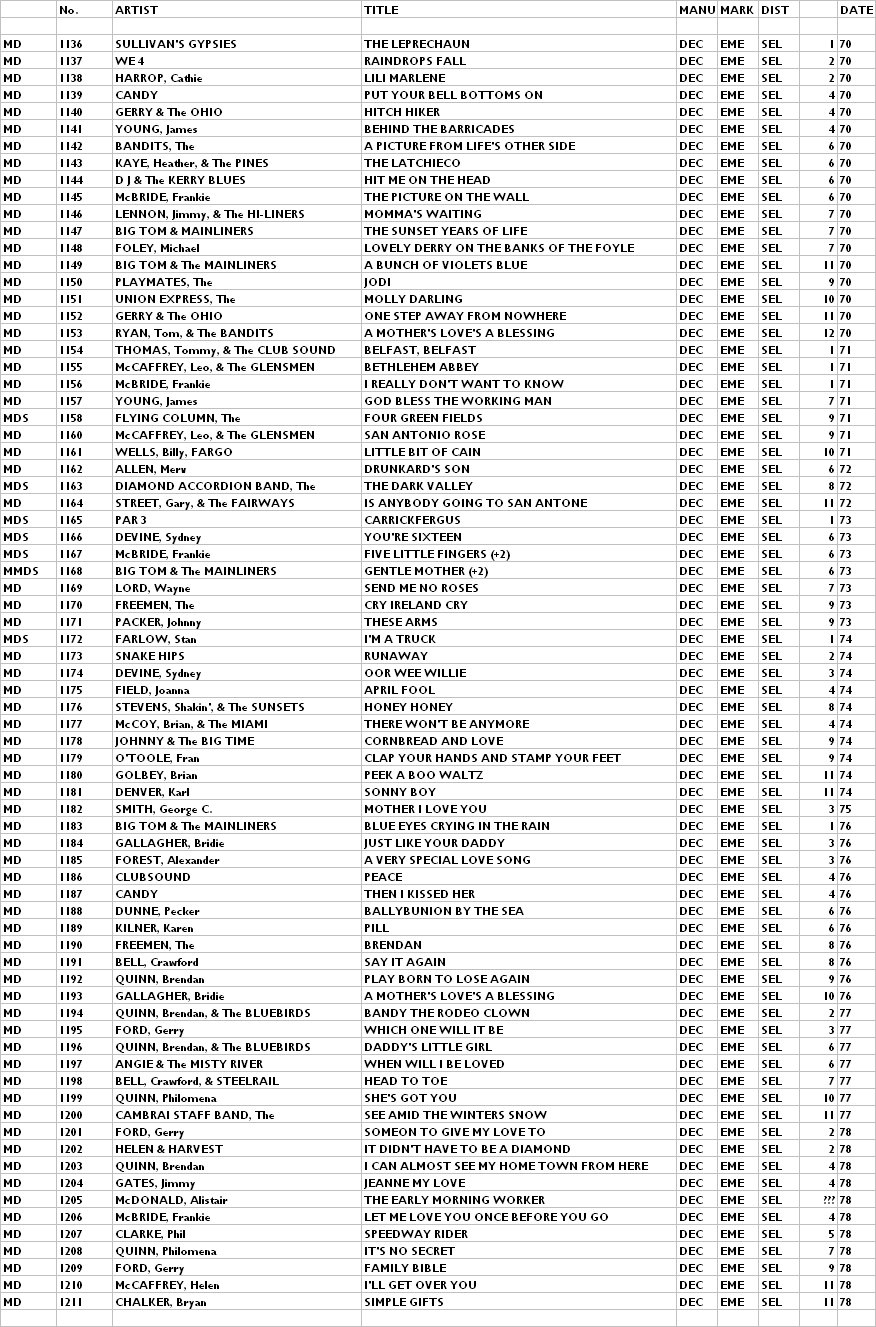


Copyright 2006 Robert Lyons.

